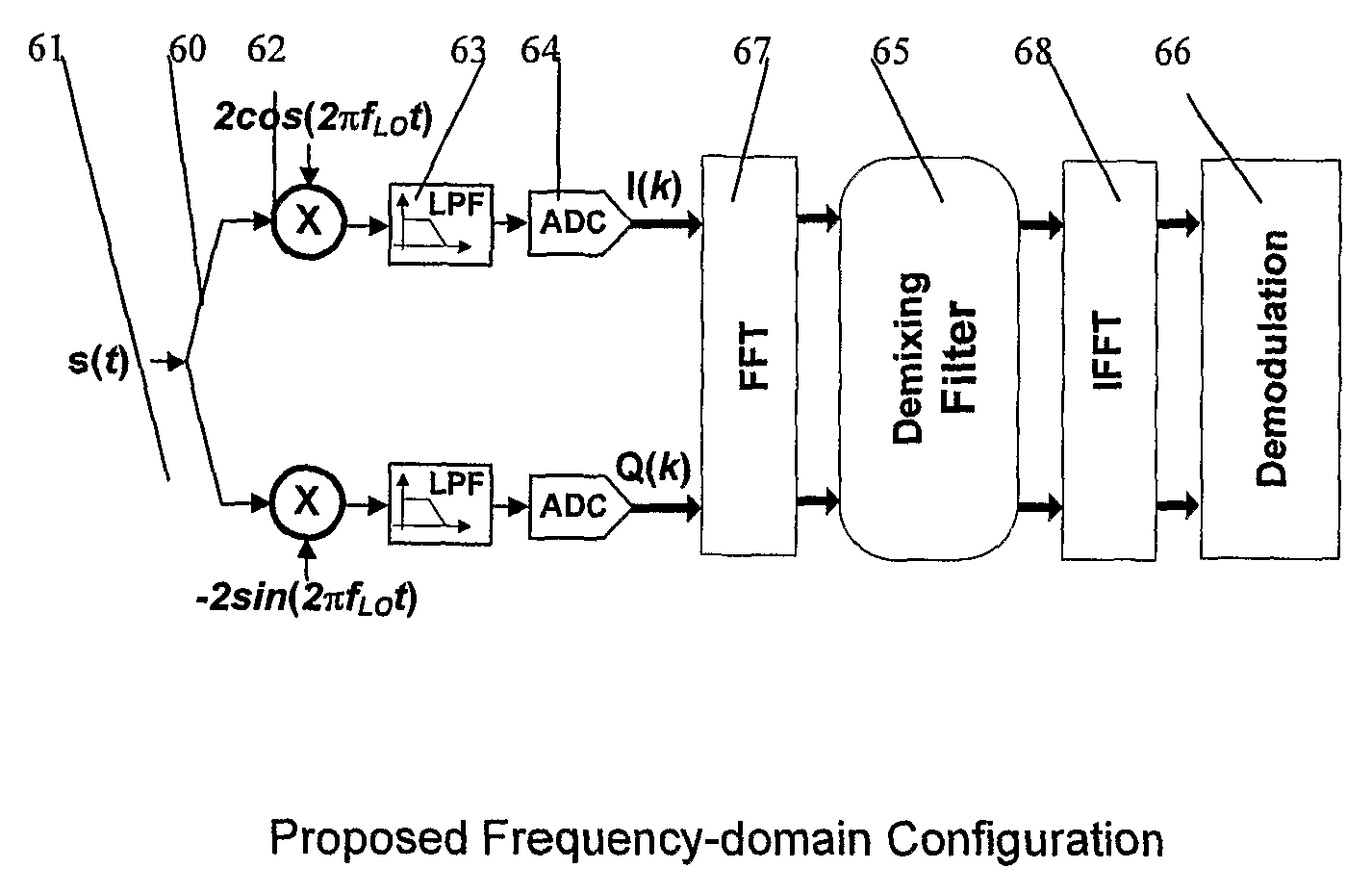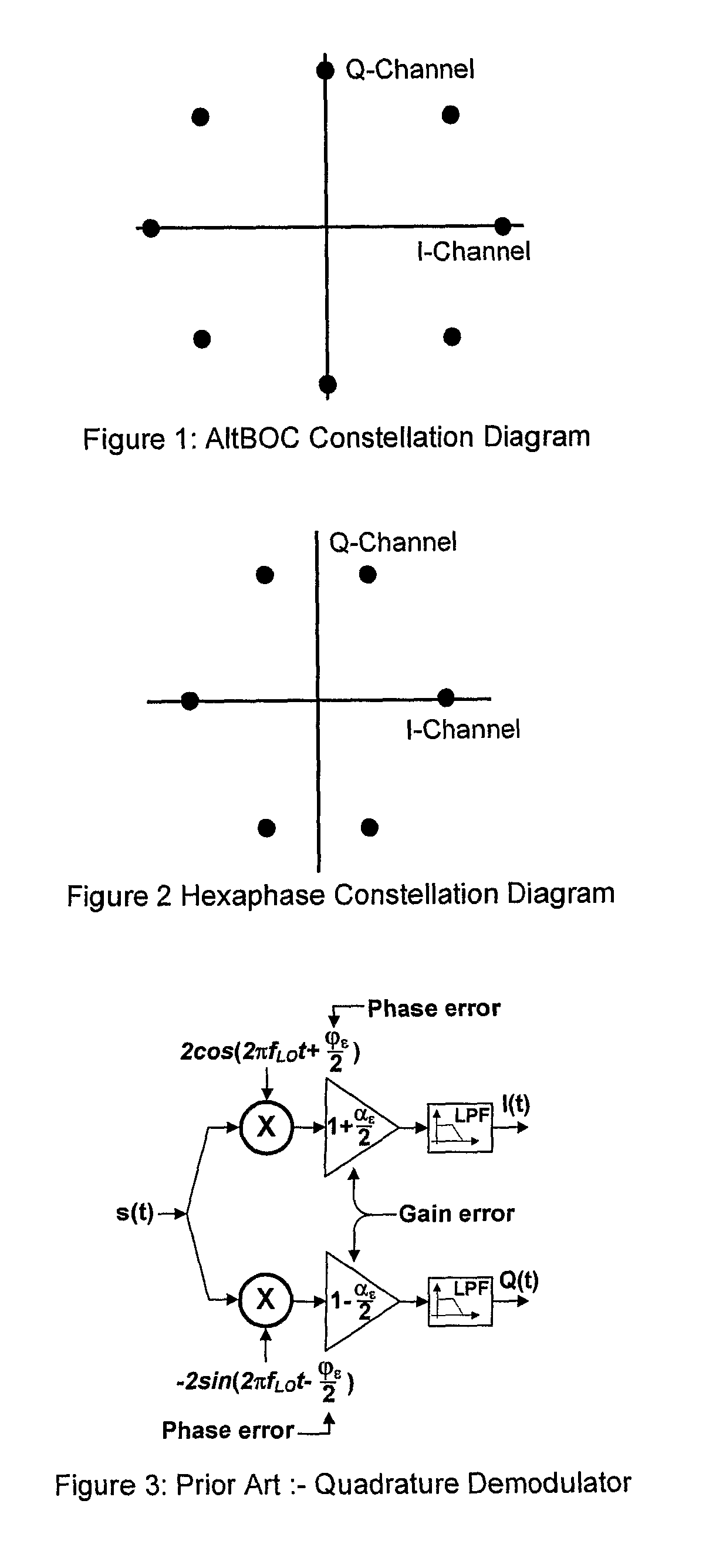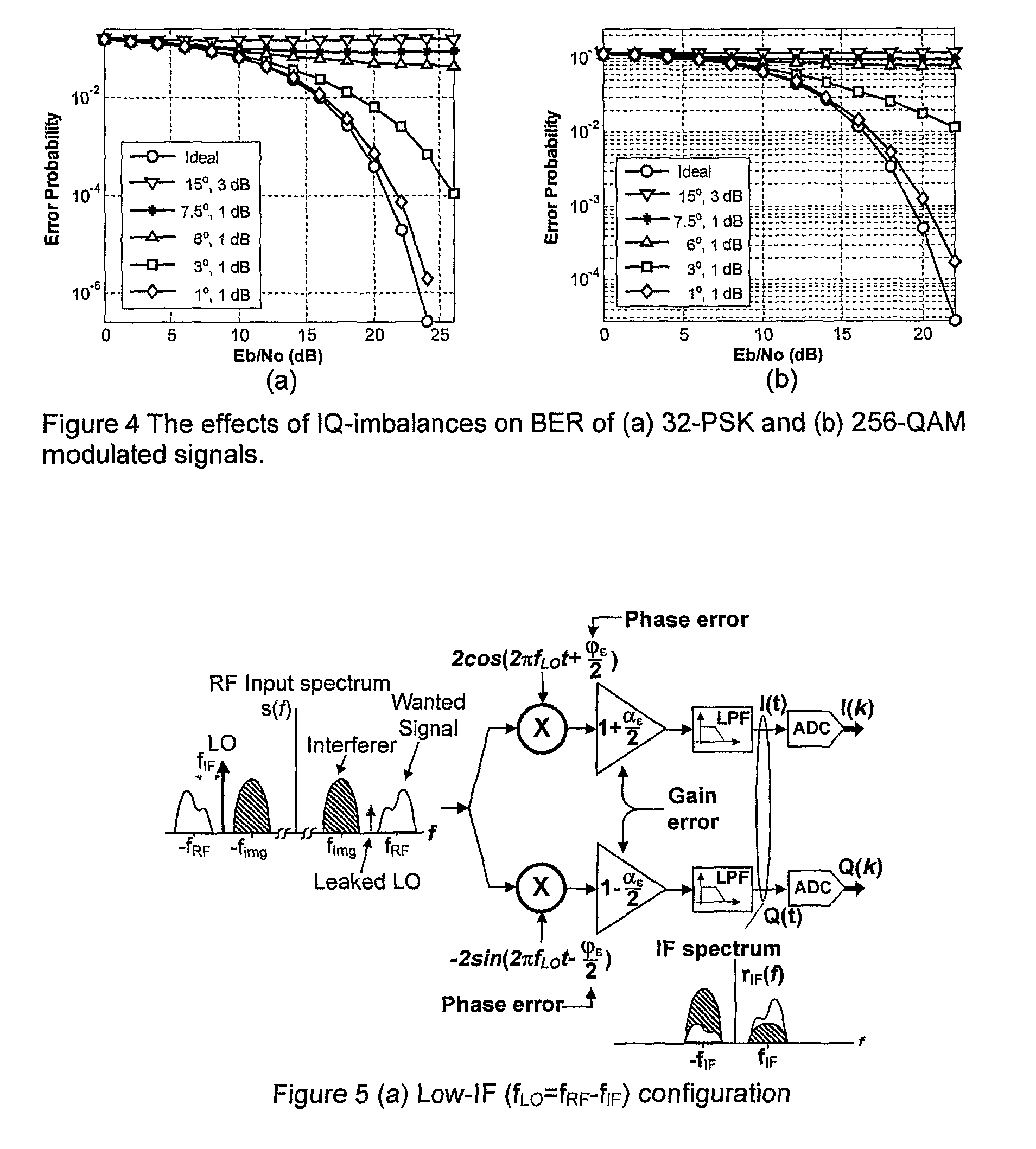Satellite radio navigation receiver
a satellite radio and receiver technology, applied in the direction of code conversion, polarised antenna unit combination, instruments, etc., can solve the problems of limited image rejection that can be achieved, hinder the wide-spread economical use of commercial products, unmatched measurement accuracy, indoor performance and multipath suppression, etc., to reduce rf impairments
- Summary
- Abstract
- Description
- Claims
- Application Information
AI Technical Summary
Benefits of technology
Problems solved by technology
Method used
Image
Examples
Embodiment Construction
[0036]In the Galileo system, the modulation formats proposed are AltBOC and CASM / modified Hexaphase modulation scheme for E5, E6 and L1 signals respectively. Using the CASM / modified Hexaphase modulation, the L1 signal can be written as:
[0037]sL1(t)=[CL1a(t)·DL1a(t)·UL1a·cos(m)-CL1c(t)·UL1b,c·sin(m)]·cos(2πfL1t)-[CL1b(t)·DL1b(t)·UL1b,c·cos(m)+CL1a(t)·DL1a(t)·UL1a(t)·CL1b(t)·DL1b(t)·CL1c(t)·sin(m)]sin(2πfL1t)(2)
[0038]where:[0039]CXY(t) is the ranging code on the Y channel (“Y” stands for I or Q for two channels signals, or A, B or C for three channels signals) of the X carrier frequency (“X” stands for E5a, E5b, E6 or L1).[0040]DXY(t) is the data signal on the Y channel in the X frequency band.[0041]fX, is the carrier frequency in the X frequency band.[0042]UXY(t) is the rectangular subcarrier on the Y channel in the X frequency band.[0043]m is a modulation index, associated to the CASM / modified Hexaphase modulation.
[0044]...
PUM
 Login to View More
Login to View More Abstract
Description
Claims
Application Information
 Login to View More
Login to View More - R&D
- Intellectual Property
- Life Sciences
- Materials
- Tech Scout
- Unparalleled Data Quality
- Higher Quality Content
- 60% Fewer Hallucinations
Browse by: Latest US Patents, China's latest patents, Technical Efficacy Thesaurus, Application Domain, Technology Topic, Popular Technical Reports.
© 2025 PatSnap. All rights reserved.Legal|Privacy policy|Modern Slavery Act Transparency Statement|Sitemap|About US| Contact US: help@patsnap.com



